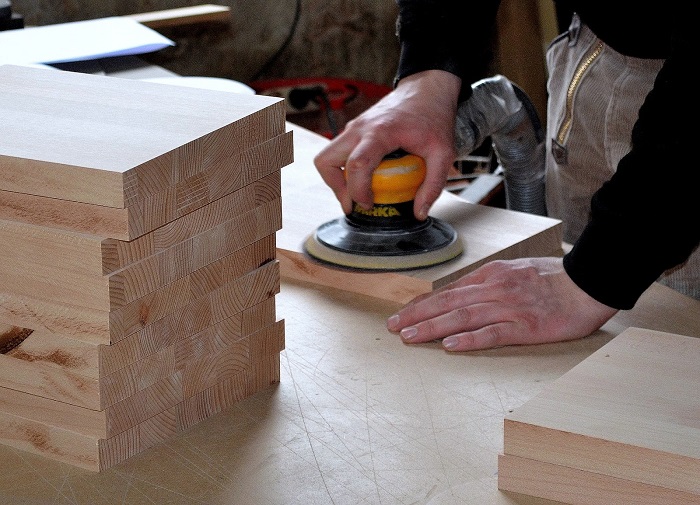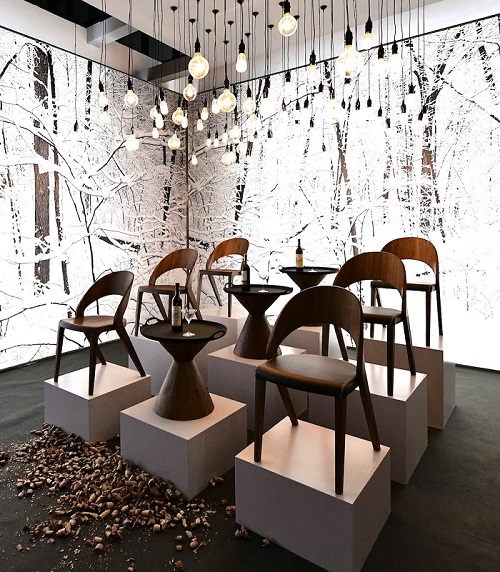2021/04/13 11:15:04
How Furniture Manufacturers Make Wood Furniture

Wood furniture is timeless. It has a natural appeal, durability, and a warm inviting nature that is difficult to achieve with any other furniture material. It is no wonder that it is in such high demand and furniture manufacturers have to continuously create more pieces to satisfy consumer needs.
That said, manufacturing quality wood furniture is a complex process that requires precision, innovation, and skill. Even the best types of wood would make poor furniture if they are not properly processed. This is why training and constantly learning the new trends in the market is so essential.
Individual buyers, designers, carpenters, and manufacturing experts can benefit from events such as the China International Furniture Fair. Every year, it hosts thousands of wooden furniture manufacturers and manufacturers of wood machining equipment. It is an unmatched learning opportunity.
Before you buy your tickets though, here is a quick rundown of how wood furniture is manufactured.
Production Processes
There are several stages involved in the production of wood furniture. They include:
Material Purchasing and Management
Source: CIFF
- Hardwood- obtained from maple, oak, cherry, and mahogany trees among others. It is highly durable, has interesting shades and grains, costs more, and takes longer to grow.
- Softwood- obtained from cedar, pine, and spruce dressing others. They are lightweight, easy to process, and are cheaper because they mature faster.
- Engineered woods- they include MDF, particleboard, plywood. They are man-made types of wood made by stacking multiple layers of wood boards, particles, or fibers using high-grade adhesives and pressure bombardment to bind them. They are lightweight, affordable, and quite versatile.
Natural wood is typically purchased as logs which are cut into pieces called lumber using a wood milling machine. The lumber may also be dried in an industrial kiln for preservation purposes. It is important to purchase wood from genuine and eco-friendly sources. The quality of the wood determines the quality of the furniture.
CNC Processing
CNC processing is also known as CNC milling. It entails using computer-controlled power tools to cut lumber into specific sizes and shapes based on the design of furniture to be produced. It occurs in a couple of steps.
- The furniture designer begins by creating the design on a computer using CAD software.
- Once the 3D design is complete, they route it to the CNC wood milling machine. It is akin to sending a design to print only in this case you are not using a printer but a machine.
- The CNC machine is thus guided by the 3D routed design and cuts the lumber in exactly the same shape.
CNC machining provides way more accuracy and is more efficient in achieving complex shapes like those of elegant sofas or ornate office furniture. It is quite fast and comes in handy when handling dense woods like hardwood.
Surface Finishing

Source: CIFF
Surface furnishings on wood furniture are mostly used to give the furniture character. You can make furniture look older, more refined, or match a color scheme by using the right surface finish. Some popular surface finishes in wood furniture production include:
- Painted- this is an easy way to achieve a desired color of wooden furniture. Most furniture paints are also effective in protecting wood from weather damage.
- Distressed- this involves scuffing furniture to make it look rustic.
- Stained- if a furniture piece is said to have a cherry finish or a maple finish it means that it has been stained to look like cherry or maple wood. The piece itself may be made of pine or any other wood.
- Lacquered- lacquers are a special liquid that dries to form a protective layer on wooden furniture. There are clear and tinted types and you can also opt for matte or glossy lacquers.
Assembly
At this stage, the lumber has been cut using the CNC machine into shapely pieces and the surface finishes have been applied. When the finish is complete and dry, furniture assembly can begin. It involves joining the individual wood pieces to form the furniture design.
Different types of joinery are used to achieve a particular look of furniture or certain functionalities. Joints are additionally useful in ensuring structural stability although some joints are more stable than others. The most common types include:
- Dowelling - a circular peg is inserted in round holes to secure the joint from coming apart.
- Mortise and tenon- a square peg is inserted in a square hole with a tight fit to secure a joint between two wood planks.
- Dowelling and dovetailing- one plank of wood would have a wedge-shaped tenon and the other would have a wedge-shaped insertion point. They overlap to form a very strong joint.
Quality Testing
Source: https://www.frim.gov.my/frim-to-expand-furniture-testing-scopes-for-quality-assurance/#post/0
Furniture testing is done once assembly is complete and any rough details are perfected. The goal here is to test for production flaws or any problems the consumer might experience with the furniture piece. The tests can be divided into two; aesthetic quality testing and functional quality testing.
Aesthetic quality testing is all about appearance. Are the edges smooth? Are there any nails jutting out? Was the furniture properly sanded and painted or lacquered? These issues are important because the appearance of the furniture either draws or turns away potential buyers.
Functional testing is about how the piece of furniture performs. For instance, if it is a storage chest, do the hinges open and shut with ease? If it is a wooden chair, how does it cope when weight is exerted on it? Signs such as creaks or wobbling indicate structural flaws and have to be addressed.
Conclusion
This is a general guide on the wood furniture manufacturing process. However, different manufacturers approach it in different ways to make their furniture stand out from their competitors. Their operations are also influenced by emerging issues in the wooden furniture industry. Such issues include sustainability, initiatives to lower VOC emissions from furniture, and innovative developments towards improving efficiencies in manufacturing wood furniture.
You can learn more about this and other pertinent issues regarding the wood furniture industry by attending the China International Furniture Fair. It is held in Guangzhou in March and Shanghai in September. It showcases wooden furniture made in China and from international exhibitors. If you wish to explore more China furniture manufacturers, the world-renowned Foshan furniture market is right near Guangzhou. Between the exhibitions, industry training events, and the furniture market, you can shop and learn to your heart's content.
Looking for the latest furniture designs and the best suppliers?
0/500
All comments
Anonymous comments
2024/12/17 14:22
Anonymous comments
2024/04/02 08:37
Anonymous comments
2021/04/24 02:22
Anonymous comments
2021/04/21 12:41
Anonymous comments
2021/04/21 12:41